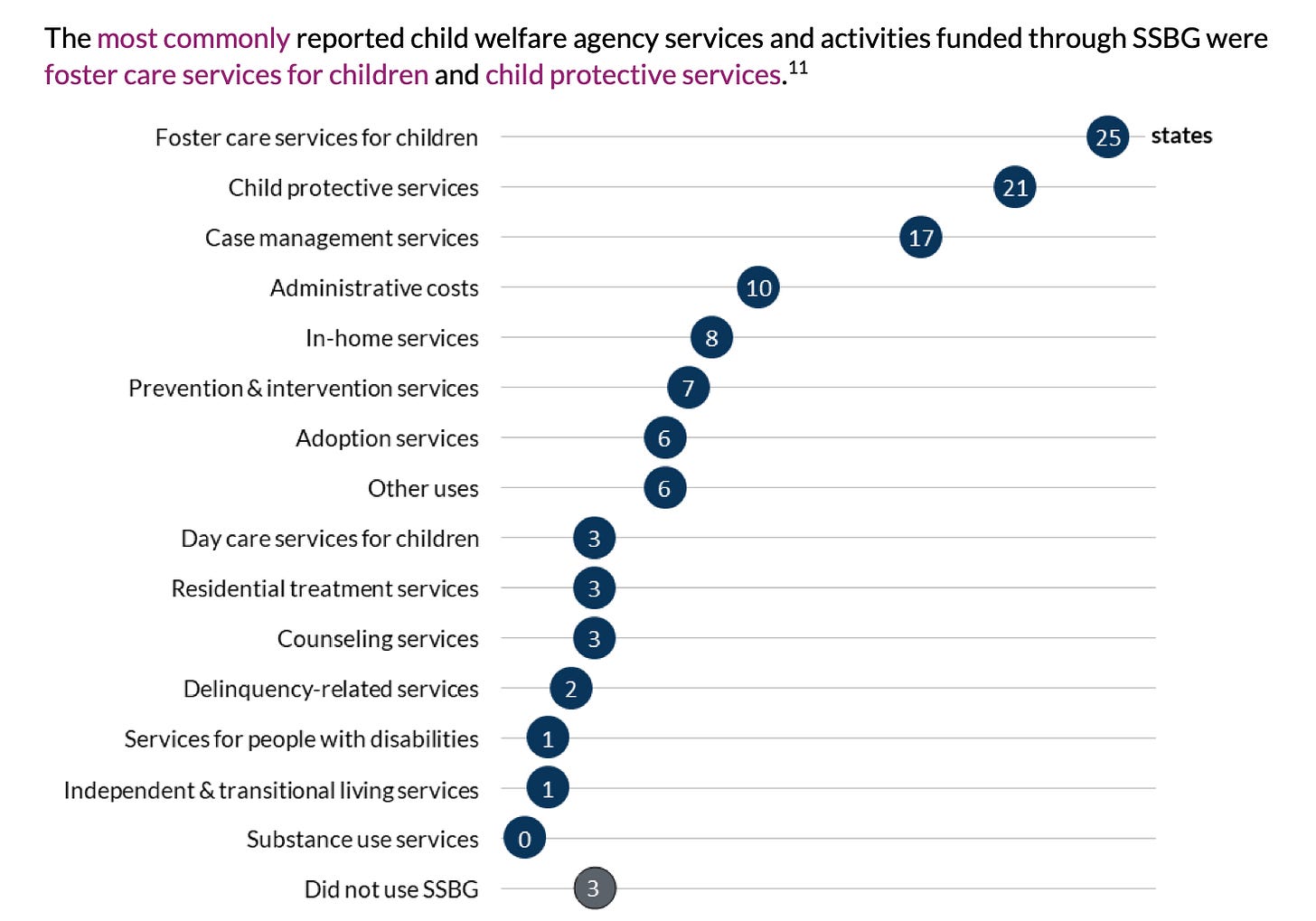Social Services Block Grant
The Social Services Block Grant (P.L. 95-134, AKA SSBG, AKA Title XX of the Social Security Act) is the highly flexible most-important-program-you’ve-never-heard-of.
SSGB provides 10% of federal child welfare spending, supporting an array of services.
Created in 1981, SSBG is the elder-millennial-oldest-daughter of social services programs; its flexible can-do attitude keeps things going smoothly even amidst chaos.
SSBG Highlights:
Annual SSBG Funding
Key Flexibilities
State investment driven by local community need.
Broad uses tied to key purposes.
States can move up to 10% of their TANF funds into SSBG.
SSBG’s Purpose(s)
SSBG supports five overarching policy goals, with lots of child welfare focus:
Achieving or maintaining economic self-support to prevent, reduce, or eliminate dependency;
Achieving or maintaining self-sufficiency, including reducing or preventing dependency;
Preventing or remedying neglect, abuse, or exploitation of children and adults who are unable to protect their own interests or preserving, rehabilitating, or reuniting families;
Preventing or reducing inappropriate institutional care by providing for community-based, home-based, or other forms of less intensive care; and
Securing referral or admission to institutional care when other forms of care are not appropriate or providing services to individuals in institutions.
Who It Serves (FY 2023)
7 million individuals, including 2 million children.1
What SSBG Does:
SSBG’s Federal regulations2 outline over two dozen service categories:
Many are related to child welfare, including:
Child welfare/youth-at-risk services (the top category by spending);
Adoption services;
Foster care services;
Protective services;
Case management; and
Counseling services.
SSBG’s breadth makes it hard to concisely sum up. SSBG is to child welfare what the Sixth Man is to a basketball team; not your key starter, but an essential team player.
Want to see what kind of numbers SSBG puts up when it comes off the bench? Here’s a chart of states’ most frequent child welfare spending categories:

There are great examples of resources that humanize this impact, including the “Faces of SSBG” report that the National Association of Counties put out in 2017.
HHS also has detailed state profiles worth reading, including:
Summing up, another way to put it is that SSBG is like your younger sibling’s piggy bank. Lacking obvious clarity of what it will buy makes it appealing to impulsively raid.
But! Emptying it comes with unintended consequences, disproportionate to the haul…

Wonk Out:
See this ACF fact sheet.
You can see the full regulations at 45 CFR Part 96, particularly Sections 96.70 through 96.74.



